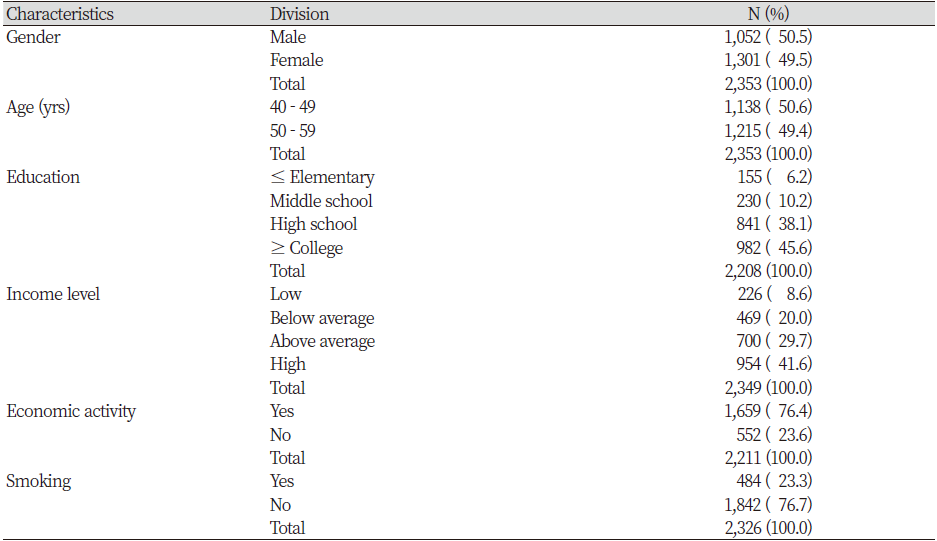Abstract
Objectives: To provide basic data for oral health policy by identifying the differences in oral health behaviors and conditions among middle-aged people in their 40s and 50s and relating these to their health-related quality of life, and to identify factors affecting health-related quality of life. Methods: In this study, secondary data from the National Health and Nutrition Examination Survey were used. Data were gathered from 8,127 participants, of which 2,353 were middle-aged (40-59 years old). Covariance analysis was performed using a complex sample general linear model to investigate the changes in the subjects’ health-related quality of life (EQ-5D) according to their general characteristics, oral health behaviors, and oral health status. Results: Oral health behavior was not significantly related to health-related quality of life. In contrast, a higher oral health status (chewing function) was associated with better health-related quality of life. Conclusions: In conclusion, this study suggested a close relationship between oral health status (chewing function) and health-related quality of life. Therefore, it is necessary to recognize the importance of oral health in improving the health-related quality of life of middle-aged people in their 40s and 50s, as well as in informing oral health policies and preventive measures for individuals and communities.
Figures & Tables

Table 1. General characteristics of study population


